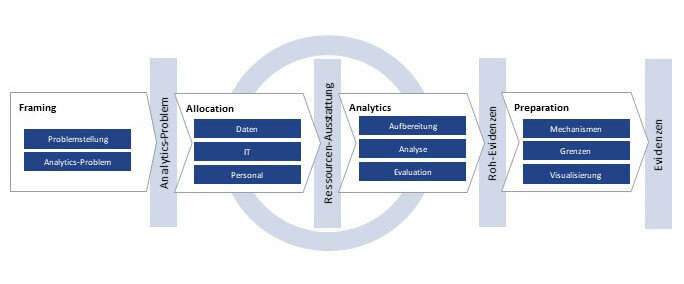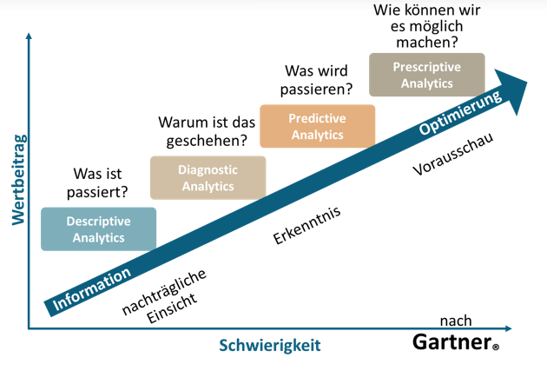Business Analytics vs. Business Intelligence. Part 2 of the blog(series) on business analytics for discussion. ✌ Don’t we already know the approaches?
Previously published:
This is Part 2:
Analytics – an important building block for business success.
Dr. Mischa Seiter aptly summarizes the core of Analytics’ tasks: “The competence to analyze available data in such a way that business management problems can be solved in an evidence-based manner is a central source of lasting competitive advantages for companies … Evidence is understood to mean well-founded, objective insights into a factual situation” (from Business Analytics: How to use data to manage companies, 2nd edition).
This definition for business analytics is not fundamentally different from other definitions and descriptions used for the business intelligence, data warehouse, etc. environment. However, to use the term “old wine in new bottles” here falls short in my view.

Business Analytics vs. Business Intelligence
Both terms are used for similar issues. The difference in the use of the two terms lies mainly in the responsibility for the BI applications. The organization and especially the operation of BI solutions were only possible satisfactorily with a high level of specialized know-how.
In many companies, this resulted in a responsibility in IT. In conjunction with this, many solutions that are managed under Business Intelligence are characterized by the fact that they are developed very efficiently for their requirement and thus also ensure good and secure operation, but turn out to be very cumbersome with regard to new requirements.
The responsibility for the operation of data analytics solutions leads to the fact that the actual owner (the business) no longer identifies with it and strives for its own solutions. This requires a new term to differentiate from the established solutions and allocate resources to the new ventures.
“Business analytics” literally lends itself to this and shows that something new is needed and also something new is emerging. The following illustration from M. Seiter: Business Analytics: How to use data to manage companies shows the process.

A look at the business analytics process makes it clear that this is not a new topic. The sub-steps are well known to us, but in this context BI applications are moving closer to the business again. This changes the view on technologies and tools significantly.
The Gartner Group has also been actively involved in the re-branding of analytics, although we are already familiar with the issue under the keyword “data warehouse” (2001).

If we look at the variety of solutions in companies, we notice that most of the established solutions are in the area of descriptive analytics. Many BI applications are characterized by the fact that they are stable over a longer period of time. Methods that can be assigned to the area of advanced analytics are practically not used.
The situation is quite different for questions that either do not exist in a stable manner or are very new and require an immediate answer. Anyone who has ever wanted to build a stable database or stable reports for marketing will know how quickly questions in this area can change. Marketing is certainly not alone here, but it offers a very illustrative example.
I recommend combining both approaches. We still have some customers today who start with the data warehouse. There is a lot of data, questions and data preparation that is of lasting value to the company. For these I recommend the Enterprise Data Warehouse. Specialists are still needed for this.
The Enterprise Data Warehouse has evolved into a logical construct. A monolithic block cannot meet the requirements. The efficiency requirements of such a solution will regularly not be able to answer new ad-hoc queries.
To ensure agility even for new questions, we need an addition of a very business-oriented organization. The business must be able to change its own data mart, develop it further, and receive efficient answers to questions that arise spontaneously.
